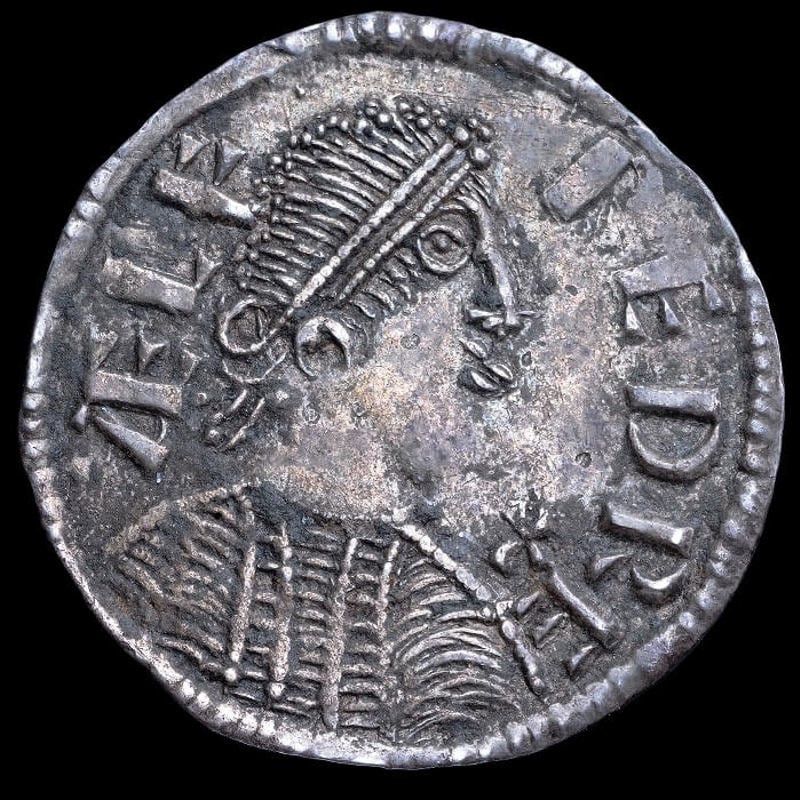Writings on the wall

Since completing a catalogue of the coinage, medal and seal material in the main store, we have taken the opportunity to look more closely at some of the remaining objects. Of particular interest was a set of boxes labelled ‘Tower of London’, containing a series of electrotypes featuring various inscriptions and ranging from crudely scratched names and dates, or tags, to lengthy passages of text and detailed artistic impressions.
The electrotypes were made from wax moulds of the graffiti carved by prisoners in the stone walls of the Tower of London, mainly in the 16th and 17th centuries, when the Tower became the country’s foremost state prison.

The copper electrotypes vary in size from approximately 15 to 50cm in length, some with a single image or script and others with a multiplicity of different inscriptions. Letters in the corner of the objects helpfully indicate the tower of origin, with the majority having B for Beauchamp Tower, BA for Broad Arrow Tower or S for Salt Tower. Most of the graffiti is in the Beauchamp Tower and many of the people whose names are carved in this tower held powerful positions in Tudor society but were imprisoned for political or religious reasons. The wall inscriptions tend to cluster in specific locations, much the same as contemporary graffiti on public buildings.

Background:
In August 1912 the Royal Mint was asked by Frank Baines, Architect in Charge of Ancient Monuments and Historic Buildings at the Office of Works, for assistance to “obtain some permanent records of many of the prisoner’s inscriptions in the Tower of London by an electrotyping process”. In the letter Baines stresses that “the matter is of very great importance” because “many of the inscriptions are in perishable stone, some of which is in a state of powdery decay.” At this time the Mint was busy using its newly-installed electrotyping plant for the production of postage stamp plates but nevertheless agreed to take on the project.
The Royal Mint annual report from 1913 gives a general description of the progress of the work, led by Edward Rigg, Superintendent of the Operative Department. Wax moulds were taken of the whole series of 268 inscriptions. Due to some of the cuts being very deep the artificer who took the moulds had to take special care to ensure “that correct facsimiles were secured and that no damage was done to the structure”. The plan was for two replicas to be made from each mould.
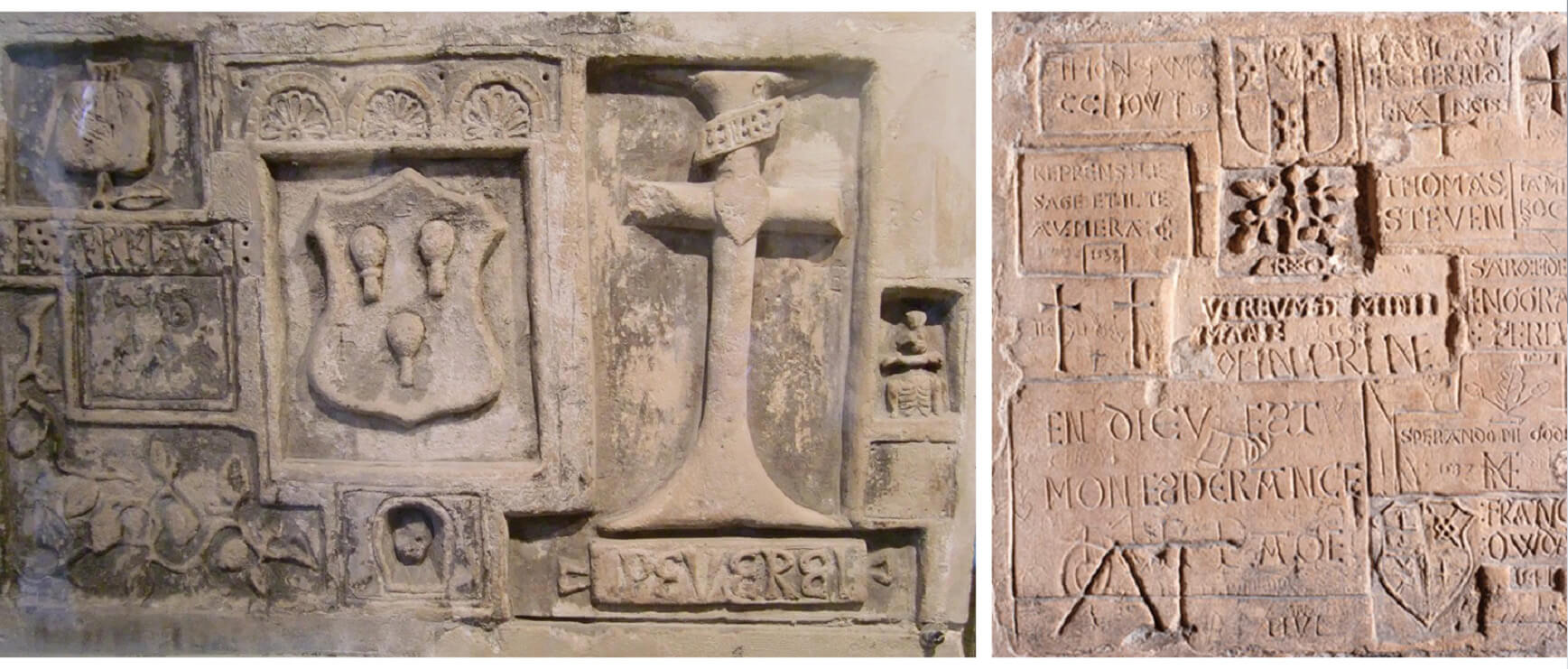
Correspondence between Baines and Rigg provides us with an insight into the process by which this work was done and the serious consideration taken for the preservation of the original stone carvings. In one letter Baines expresses concerns that oil used on the stone before the moulds were taken was causing discolouration. Rigg’s response assures that the discolouration will fade and that the use of oil is essential: “It would hardly be safe to omit the slight dabbing of oil owing to the risk of the wax mould drawing out loose fragments of stone.”
There was some difficulty in moulding the “undercut” carvings, which are those cut around the edges to produce letters or images in relief. According to Rigg they could not “be moulded in the ordinary manner”, and experiments were carried out at the Mint using pieces of Gatton stone with rough cut designs to try and improve the method.
In 1914, Rigg reported the completion of the work, 458 electrotypes with a total area of 332.8 square feet were delivered to the Office of Works. Overall, the quality of reproduction was greatly admired.

Arthur and Edmund Poole were brothers accused of conspiring to place Mary Queen of Scots on the throne and were imprisoned as traitors. Queen Elizabeth I spared their lives but they eventually died whilst still in captivity. Various inscriptions in the Tower are attributed to them.


Edward Smalley was the servant of a member of parliament who had neglected to pay a fine for assault. He was imprisoned in the Beauchamp Tower for one month in 1576. His name appears twice in the Tower.

Giovanni Battista Castiglione was the Italian tutor of Princess Elizabeth (later Queen Elizabeth I) and carried private letters to the Princess whilst she was imprisoned in the Tower. He was imprisoned in the Salt Tower in 1556 by Elizabeth’s half sister Mary I on charges of plotting against the Queen but was later released. Above is one of two inscriptions thought to be made by Giovanni Battista Castiglione. The electrotype is not quite as successful as others, perhaps due to the shallow nature of the original carving.

Much of the material is religious in sentiment. This image of a wounded foot from the Salt Tower is a Catholic symbol of Christ’s sacrifice, while an image of a wounded hand can be found in another area, similarly representative of the wounds of Christ. The monogram ‘IHS’ appears numerous times in the prisoner inscriptions, a symbol of Jesus Christ in the form of an acronym.
You might also like
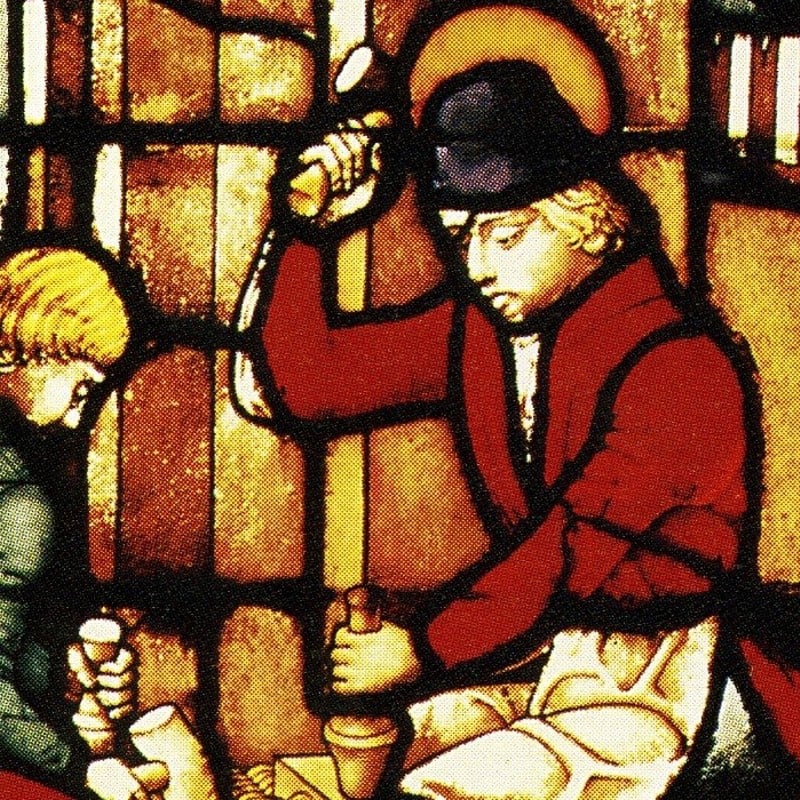
Making Money
The basic minting process of melting, casting, blanking and striking is essentially timeless.
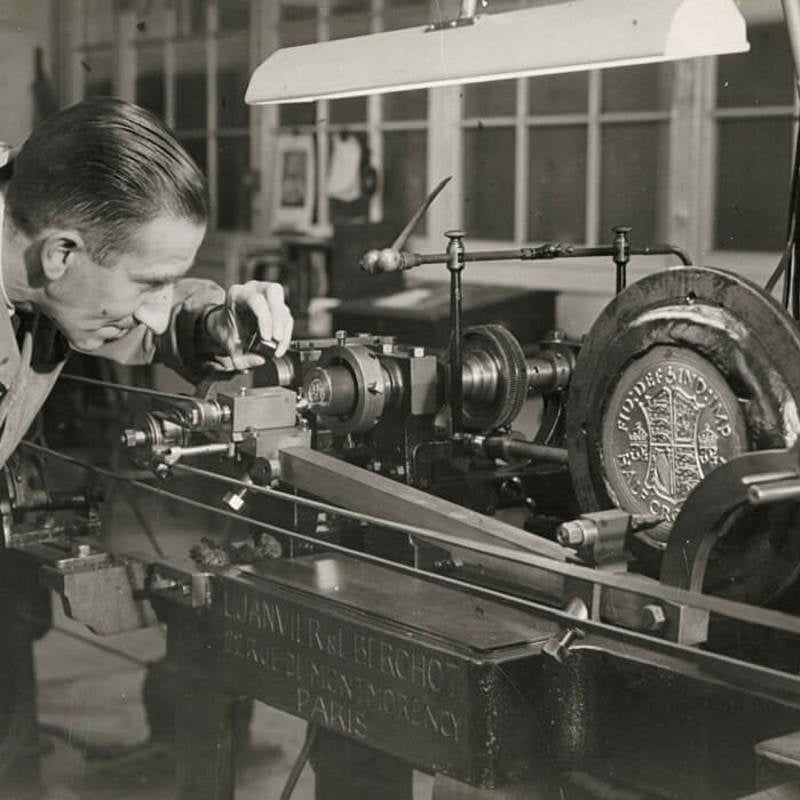
Collection in Context
Each object in the Museum store marks a step in turning a concept into a finished coin design.
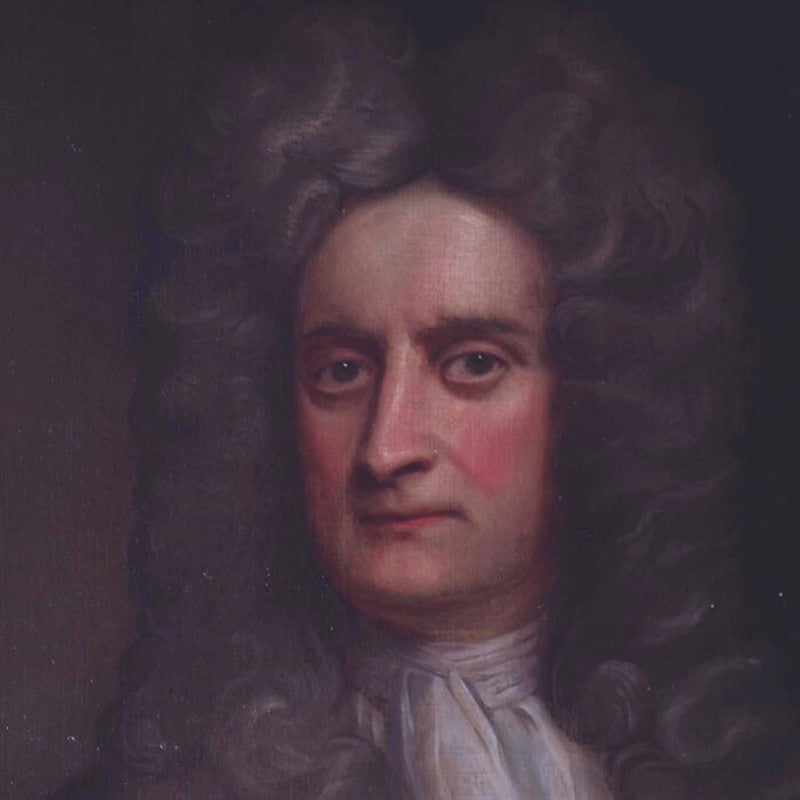
Isaac Newton, Warden and Master of the Royal Mint 1696-1727
Newton took an active interest in mint affairs.

